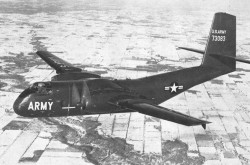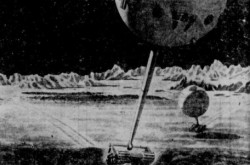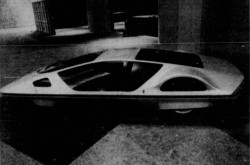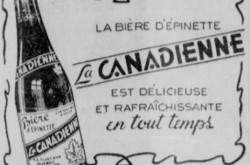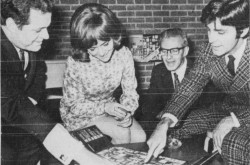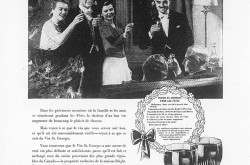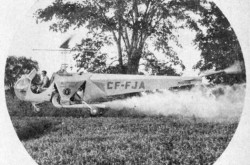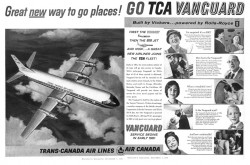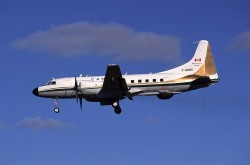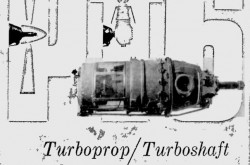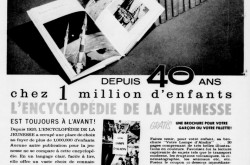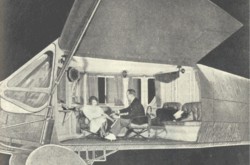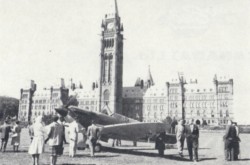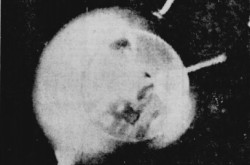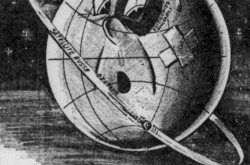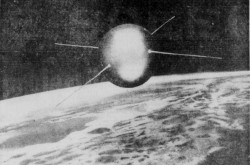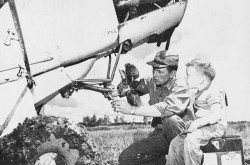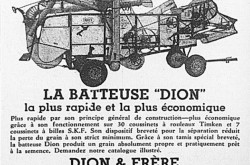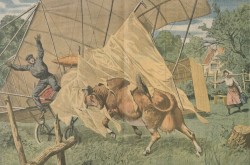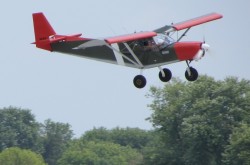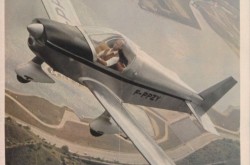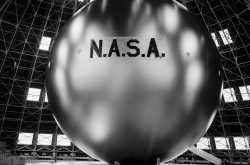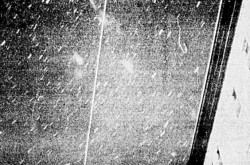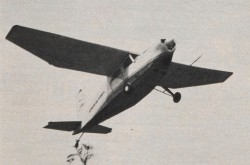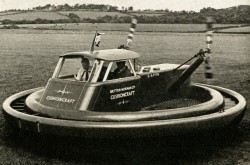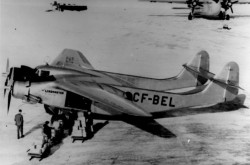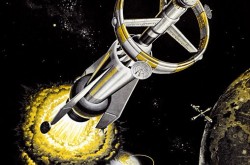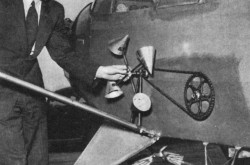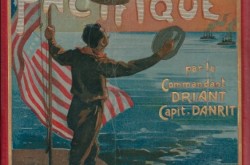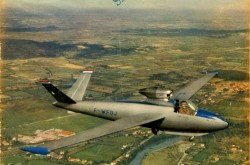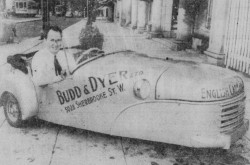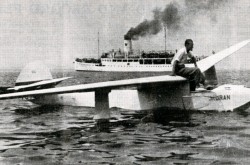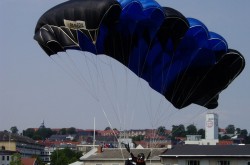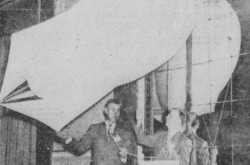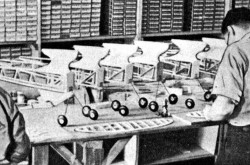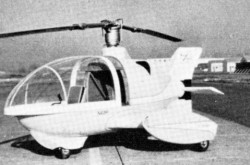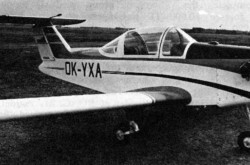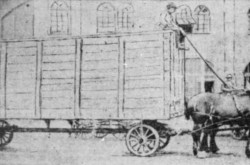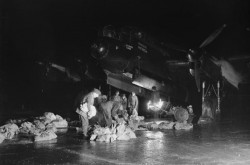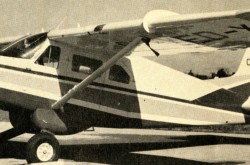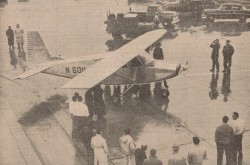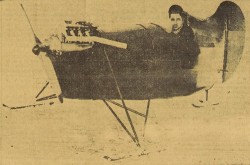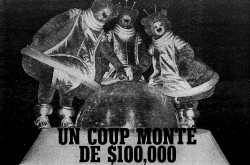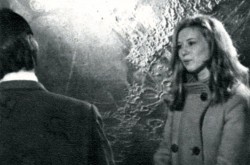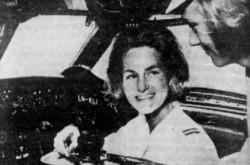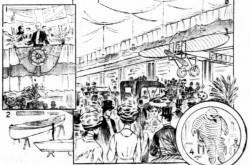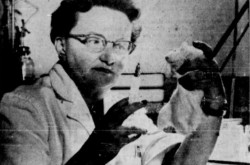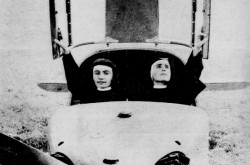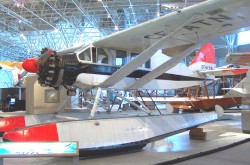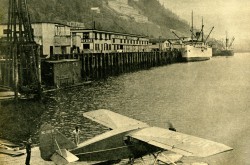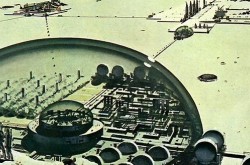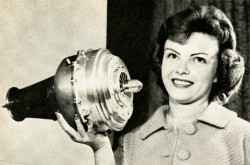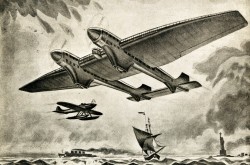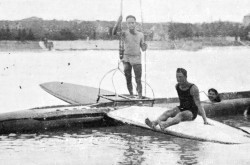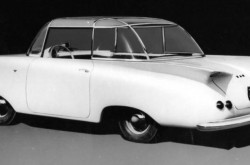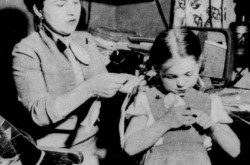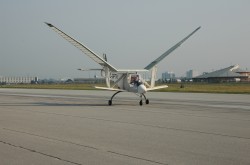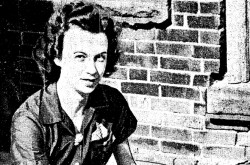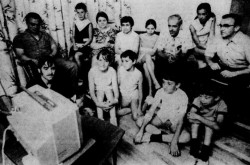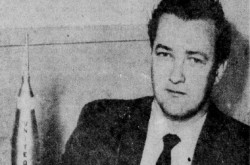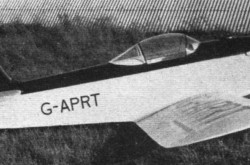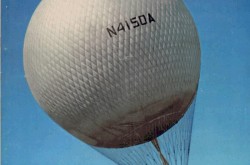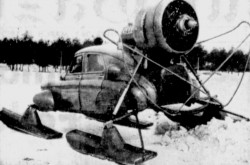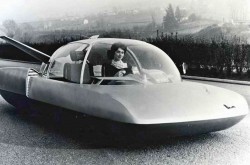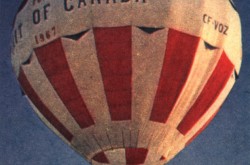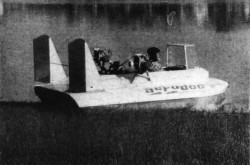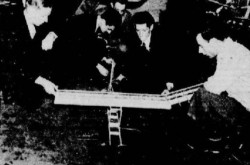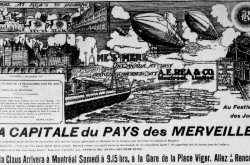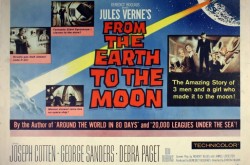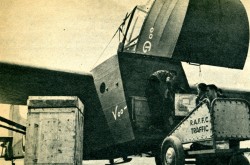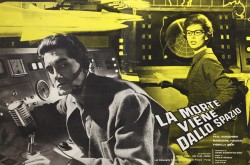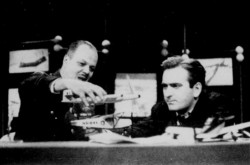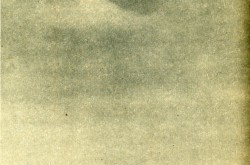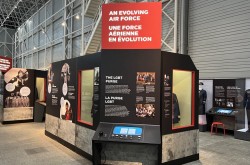I would love to own one; on my boat, that would be dandy: The off road journey of the Beehoo / Magna Amphicat

As a greeting, my reading friend, I make you the solemn promise to be brief, at least for this week.
Let us begin our peroration, dare I say (type?) pontification, with a visit to the second edition of the Salon (international?) de l’Auto, held at Place Bonaventure, in Montréal, Québec, from 15 to 25 January 1970.
One of the many, many visitors at this event was none other than Charles Aznavour, born Shahnourh Varinag Aznavourian. This world famous French author composer interpreter, actor and writer of Armenian origin was in North America in 1969-70.
A journalist by the name of Suzanne Piuze caught up with the “grand Charles,” as Aznavour was sometimes called, something that may have amused, or not, another “grand Charles,” namely Charles André Joseph Marie de Gaulle, a large than life gentleman mentioned in March 2018, June 2019 and September 2019 issues of our blog / bulletin / thingee, as he examined, you guessed it, the 6-wheel drive all-terrain (ATV) vehicle portrayed in the photograph at the beginning of this article. Said vehicle was / is a Beehoo / Magna Amphicat.
If yours truly may be permitted the briefest of digressions, I would like to point out that Aznavour played a secondary role, a Greek police inspector to be more precise, in the 1976 American action movie Sky Riders. The main reason I bring up this rather unsuccessful production was / is due to the use of hang gliders as a means to rescue the kidnapped wife and 2 children of an American international industrialist from a group of bad hombres (Hello, EG!) holed up in an abandoned Greek monastery located on top of a rock needle. The highly original and dangerous rescue mission, performed by a small team of professional if rather colourful hang glider pilots, was a success. Of course.
If I may digress again for 1 moment, or 3, the Amphicat on display at the 1970 Salon (international?) de l’Auto was not the first vehicle of this type on display in the metropolis of Canada, or in Québec. That honour belonged to the vehicle on display at the seventh Salon national de camping et sports, also held at Place Bonaventure, in March 1968.
You probably expect a distinguished peroration on the Amphicat, don’t you, my reading friend? And you would be right. I wish I could begin said peroration with the birth of the hero of our story but information in that regard has yet to be found. You are heartbroken, I know, but, to quote a character of the 1987 romantic comedy and cult movie The Princess Bride, mentioned in February 2018, March 2018 and January 2019 issues of our blog / bulletin / thingee, get used to disappointment.
The only piece of information yours truly could find on the pre-Amphicat phase in the life of our hero was / is the fact that, between 1952 and 1957, he worked for the well-known Canadian aeronautical giant A.V. Roe Canada Limited (Avro Canada), of Malton, Ontario, a subsidiary of British aeronautical giant Hawker Siddeley Group Limited. I presume that he worked for the well-known aircraft manufacturing subsidiary of this firm, A.V. Roe Aircraft Limited (Avro Aircraft), also based in Malton. And yes, my aircraft obsessed reading friend, both Avro Aircraft and Avro Canada were mentioned in several issues of our blog / bulletin / thingee since March 2018.
And yes, the Arrow was mentioned several time in our blog / bulletin / thingee since February 2018, but I digress.
Our story thus began in 1957, when Ronald James “Ron” Beehoo, a machinist living in Streetsville, Ontario, left his job to start a small jobbing shop / maintenance engineering firm, Beehoo Engineering Limited. There he maintained and repaired industrial machinery, and produced special machinery and equipment, while his wife, Betty Louise Foskett Beehoo, took care of all the details necessary to the daily operations of the family business. To make a short story long, she was the company’s bookkeeper, secretary and treasurer. On top of that, she took care of the couple’s 7 children, 3 girls and 4 boys born between 1953 and 1962. A supermom Mrs. Beehoo certainly was.
Working in the basement of the family home, in his spare time, Beehoo put together an amphibious ATV around 1961-62. He did so to help his father, George Albert Beehoo, get around a peat bog near Cornwall, Ontario. Beehoo’s first prototype was a small tracked vehicle. He seemingly did not like it too much. Beehoo therefore set out to design a 6-wheel ATV.
This vehicle, the Aquacat, may, I repeat may, have been the first ATV economical enough and small enough to be bought and operated by individuals interested in travelling in / on / through woods, water, swamps, snow, sand, marshes, ice, gravel, bogs, asphalt, etc. in search of adventure, fun or hunting opportunities.
This being said (typed?), the Aquacat was initially conceived primarily as an all-terrain utility vehicle for use by the employees of telephone, mining and forestry firms, as well as electrical utilities. Its success as a recreational vehicle was the maraschino cherry on top of the proverbial sundae. That very success led several others individuals and firms to develop ATVs of their own.
It goes without saying that the Aquacat was not the world’s first ATV or, to be more chronologically accurate, the world’s first swamp buggy / off-highway vehicle / go-anywhere vehicle. The pioneers in this field had, however, met with numerous technical and financial problems which limited the success of their vehicles. Back then, of course, the expression all-terrain vehicle and its abbreviation, ATV, did not exist.
In 1965, convinced that he had a winner, Beehoo hired a few people and began to produce his ATV. Back then, this work was but a subsidiary activity at Beehoo Engineering. The company’s phone began to ring more and more as more and more people heard about the Aquacat, however. Beehoo hired more people who occupied more and more space in Beehoo Engineering’s small facility. Even so, he was still unable to keep up with demand. Some / many of the new orders for this 2 / 3-seat agile, durable, reliable and unstoppable vehicle may, I repeat may, have come from the United States.
A brief digression if I may. One reason for the inability of Beehoo Engineering to keep up with demand, besides its small size, was the fact that the fibreglass body of the Aquacats and early Amphicats was made using a relatively slow hand layup method.
It was around that time, or before perhaps, that Beehoo realised that the name Aquacat / Aqua Cat was already used in the United States, for what yours truly believes was / is a small sailboat catamaran named Aqua Cat, CATamaran, Aqua Cat, get it?, launched in 1962 by Hobie Cat Company. Worse still, the name had been copyrighted. In order to sell his ATV in the United States, Beehoo pretty much had to come up with a new name. Some unknown soul suggested that the ATV be called Amphicat.
It may also have been around that time, or perhaps later, that Beehoo Engineering became Beehoo Industries Limited. By then, the Amphicat may have been the company’s sole product. It certainly became so at some point.
Another event of that busy time was the acquisition of a small existing factory to set up a proper assembly line. Even though Beehoo had supervised the preparation of a set of plans for a factory designed specifically for the production of the Amphicat, he concluded that it would simply take too much time to build it. In any event, production soared with hundreds of Amphicats going to happy customers each month. The backlog was gradually reduced and, eventually, eliminated. At some point in 1970, said assembly line was moved to Beehoo Industries’ refurbished main facility. The small factory thus became a warehouse.
By that time, the oldest AmphiKids, an expression yours truly found in a 1970 issue of the American monthly (?) magazine ATV World, were allowed to talk to customers, give demonstrations, and drive in competitions. Two of the boys even worked on the assembly line during the summer months. Said assembly line was supervised by their grandfather.
One might argue that the award given to Beehoo Industries by the very popular American monthly magazine Popular Mechanics at the 1967 edition of the International Inventors and New Products Exposition held in New York City, New York, played a significant role in putting the Amphicat on the map. That, and an appearance at the very popular American television show The Mike Douglas Show, hosted by, you guessed it, Mike Douglas, born Michael Delaney Dowd, Junior, seemingly in January 1968.
By then, an Amphicat had made an appearance, and quite the appearance it was, at another very popular American television show, The Tonight Show, hosted by John William “Johnny” Carson. Would you believe that, as millions of Americans and Canadians watched in disbelief, the very well-known singer Tony Bennett, born Anthony Dominick Benedetto, gently / slowly ran over a perfectly willing Carson without causing him any injury whatsoever? You just can’t buy publicity like that.
Mind you, American adrenalin junkies were not the only people interested in the Amphicat. Orders were coming from as far afield as France, Sweden and West Germany. Would you believe that the Canadian ATV caught the eye of Prince Rainier III, born Rainier Louis Henri Maxence Bertrand Grimaldi, the ruler of the microstate of Monaco?
Before I forget, Beehoo Industries could count on distributors located in the metropolitan areas of Montréal; Vancouver, British Columbia; and Winnipeg, Manitoba, no later than the end of 1968. There was also at least 1 distributor in the United States, in Detroit, Illinois.
By the fall of 1970, magazines had devoted more space to the Amphicat, and published more photographs of it, than of any other ATV. They had good reasons to do so. You see, me reading friend, the Amphicat was the best-selling ATV on the market. Better yet, there were more Amphicats in service, in more countries, than all other types of ATV combined. More than 10 000 had been built by the fall of 1970.
A brief digression if I may. A longer one if I may not. Your choice. Would you believe that, during the winter of 1969-70, a certain couple seemingly had a lot of fun with 1 or 2 Amphicats, while staying with a well-known American rock and roll musician by the name of Ronnie Hawkins who had a residence near Mississauga, Ontario? But back to our story.
Eager to maximise… What is it my reading friend? You want to know the names of the individuals who made up the aforementioned couple? You really don’t know who I’m talking (typing?) about? Really? Let it be known then, throughout the land, that said individuals were John Winston Lennon and Yōko Ono. Taking a well-deserved break from their campaign for world peace, the couple also did some snowmobiling. A photograph of a bearded Lennon on an Amphicat, feeling like a little kid, to quote Elton John, born Archibald Kenneth Dwight, can actually be found online, but back to our story – and no interrupting. Unless I’m the one doing the interrupting.
Did you know that Lennon eventually bought an Amphicat and that he took great pleasure in driving it in his vast and impressive country estate in England, Tittenhurst Park, with his young son, John Charles Julian Lennon?
Eager to maximise sales in the United States, Beehoo sold the exclusive sales rights of his ATV for that country to an American company, Mobility Unlimited Incorporated, around 1968.
Very much aware that his staff would never be able to keep up with demand, now that Americans had heard about the Amphicat, Beehoo sold the exclusive manufacturing rights of his ATV for the United States, but nowhere else, to Magna American Corporation, a division of Magna Corporation, in 1969. This leading manufacturer of garden tillers, not to mention the very popular Shop Smith, a multipurpose shop tool originally introduced in 1947, soon began to produce more and more Amphicats. In March 1970, Magna American acquired Mobility Unlimited.
By the early 1970s, 40 or so Amphicats came out of Magna American’s assembly line every day. Its new subsidiary, Mobility Unlimited, took care of the restyling and exclusive componentry which explained to some extent why the Amphicat was the most copied ATV in the world. Would you believe that one of these exclusive components was a rather popular aluminum snow plow developed in Cooperstown, yes, that Cooperstown, the home of the National Baseball Hall of Fame, by Paul Deeter, a welder whose main occupation was the design and construction of houses?
You undoubtedly wonder why the Amphicat was such a unique vehicle, don’t you, my reading friend? The truth was / is that its plastic body, 2-speed (forward and reverse) transmission and puncture proof wheels had been specifically designed for use in it, and no other vehicle.
To complete a digression presented to you earlier, yours truly has the pleasure to point out that, from 1967 onward, the body of the Amphicat was moulded in plastic, a first for an ATV, via a process developed by Marbon Chemical Corporation, a division of an American firm active in various sectors, Borg Warner Corporation. The very success of the Amphicat justified the substantial financial outlay involved in setting up a moulded body production line. Better yet, said production line used a brand new, dare I say revolutionary way of welding together the 2 main components of the body of the Amphicat, namely ultrasonic welding.
At the risk of opening myself to criticism for diluting the content of this fascinating issue of our blog / bulletin / thingee, yours truly feels compelled to point out that, around the middle of 1961, the aforementioned Avro Aircraft, by then in deep trouble as a result of the cancellation of the aforementioned Arrow, signed a cooperation accord with the Ingersoll-Kalamazoo Division of Borg Warner.
The 2 firms pooled their knowledge in the field of air-cushion vehicles / hovercraft, landing craft and amphibious vehicles. They were quick to submit to the Office of Naval Research of the United States Navy an amphibious air cushion vehicle project capable of transporting equipment and / or troops. These efforts did not lead to anything concrete, but back to our history.
Would you believe, my incredulous reading friend, that a firm known as Canadian Ingersoll-Rand Company Limited was founded in 1882, in Sherbrooke, Québec, yours truly’s homecity, under the name of Ingersoll Rock Drill Company? The factory, then owned by Beloit Canada Limited, a subsidiary of the American firm Beloit Corporation, closed its doors in 1998. It was converted into a rental building in later years.
As amazing as the all-terrain abilities of the Amphicat were, drivers had to remain cognisant of the fact that it was still subject to the law of gravity. It could tip over if one tried to drive along the steep bank of a stream, and flew like the proverbial brick if one tried to leap across an embankment. Even though the Amphicat was pretty much unsinkable, entering a body of water at top speed was to be avoided, given the likelihood that the cockpit would fill with water.
As well, the Amphicat could be described as extremely / unbearably noisy. Worse still, when travelling at high speed over rough terrain, the people on board had to make sure they did not end up flying through the air with the greatest of ease. Landings, both on the seats or the ground, could be painful.
The Amphicat was also very slow on water. If truth be told, one could argue that any wind, wave or current could make navigation all but impossible. Given this, Beehoo Industries / Magna American suggested that users mount a small outboard engine on their Amphicat if they planned to travel on water. And yes, that engine had to be bought separately, just like the extra set of 6 tires one could buy to increase the floatability of the Amphicat when a heavy load was carried. Anyone faced with frequent travel on deep, soft snow might consider the possibility of buying lightweight tracks that could be wrapped around the tires. And yes, said tracks also had to be bought separately. Anyone interested in carrying more cargo than an Amphicat could carry could buy an amphibious 2-wheel trailer. And yes again, said trailer had to be bought separately.

A typical Beeho / Magna Amphicat, November 2009. Wikipedia.
To paraphrase American automobile pioneer Henry Ford, any customer could have an Amphicat painted any colour that she or he wanted, so long as it was red – at least up to 1970 or so, if not later.
Would you believe that the 4 animal members of a fictitious rock band sometimes / often drove Amphicats decked out in various colours? You should. The band in question, made up of Bingo the gorilla, Drooper the lion, Fleegle the dog / beagle and Snorky the elephant, was the Banana Splits. It starred in The Banana Splits Adventure Hour, an American live action / animated television series broadcasted between September 1968 and September 1970. Each of the 31 hour long episodes featured the Banana Splits in various activities as well as live action and animated segments featuring other characters.
And yes, yours truly remembers watching numerous episodes of Banana Split, the Québec made French language version of this series, broadcasted between September 1969 and the early 1970s. The opening theme was a rather catchy tune. Would you believe that some notes, many notes in fact, of said theme popped into my head, after almost 50 years, as I wrote the draft of this text?
One or more (yellow?) Amphicats were also used, as moon buggies this time around, in an unspectacular Italo British / British television science fiction series initially broadcasted between September 1975 and November 1977. What was the title of said series, my reading friend? No, there is no prize to be won for the right answer. Said series, say I after realising that you were not interested in answering the question because there was no prize, was / is Space 1999. It was mentioned in an October 2019 issue of our blog / bulletin / thingee.
An attentive viewer would also be able to spot an Amphicat in an episode of a British television science fiction series mentioned in no issue of our blog / bulletin / thingee. The series in question, Blake’s 7, hit the airwaves between January 1978 and December 1981. Again, yours truly remembers watching a number of episodes a looong time ago.
A rather unfortunate example of animal exploitation on television was another place where one could see an Amphicat. The series in question, Lancelot Link, Secret Chimp, was broadcasted between September 1970 and January 1971. All the characters in this surreal spy spoof inspired by another spy spoof, Get Smart, were played by chimpanzees. Get Smart, broadcasted between September 1965 and May 1970, was a great deal better – and actually funny. And yes, yours truly remembers watching a number of episodes of the French language version of this series, Max la Menace, a looong time ago.
Did you know that Irwin Toy Limited of Toronto, Ontario, made a toy version of the Amphicat that could be used in conjunction with G.I. Joe dolls, sorry, sorry, action figures, in the early 1970s? As well, an American toy manufacturer, LJN Toys Limited, introduced another toy version of the Amphicat for use with Space 1999 action figures, in 1976.
Are we done yet, you ask, my tempestuous reading friend? Well, no.
Yours truly would like to take this opportunity to suggest that a sister / brother institution of the Canada Aviation and Space Museum, in Ottawa, Ontario, the Canada Science and Technology Museum, in Ottawa, may wish to consider the possibility of thinking about acquiring an Amphicat, a vehicle of outstanding significance and national importance if I do say so myself.
Are we done now, you ask? No, say I. Did you know that the transmission of the Amphicat was developed by Ontario Drive & Gear Limited (ODG) of Kitchener, Ontario? Would you believe that here lies, yes, yes, a tale?
Said tale began in 1962, in Kitchener, with a visit made by West German businessman Ortwin Stieber, a gentleman seemingly involved with a company by the name of Heynau Antriebstechnik Gesellschaft mit beschränkter Haftung. ODG, as the company he set up before long was called, was to design and produce custom gear and power transmission assemblies for the North American market, as Heynau Antriebstechnik did in West Germany. In 1970, the company became fully independent and moved to New Hamburg, Ontario. One of Stieber’s sons, Joerg Stieber, seemingly left West Germany to take over the management of ODG in 1985. This (aeronautical?) engineer retired from his posts of chief executive officer and chairperson of the board of directors in December 2011 and July 2019.
It is worth noting that, over the years, Stieber senior’s brother worked at Spar Aerospace Corporation, in Toronto; at the Communications Research Centre (CRC) / Communications Research Centre Canada (CRCC), in Ottawa; and at the Canadian Space Agency (CSA), in Saint-Hubert, Québec. If truth be told, Michael Stieber contributed to a number of technological world firsts. He contributed to the development of the manipulating arms of the International Space Station, the Space Station Remote Manipulator System and the Special Purpose Dextrous Manipulator, in other words Canadarm2 and Dextre, for example. Stieber, Michael Stieber that is, founded Apollo Systems Research Corporation of Kanata, Ontario, in 2004. This firm was still in business in early 2020.
You will remember, my reading friend, that the space habitat known as the International Space Station was mentioned in several issues of our blog / bulletin / thingee since July 2018. Both the CRC and CRCC were mentioned in a January 2018 issue of our blog / bulletin / thingee. Spar Aerospace, on the other hand, was mentioned in a November 2019 issue of that same intergalactically known publication. But back to our story. Oh yes, and Canadarm2 was mentioned in a July 2019 issue of our blog / bulletin / thingee. Don’t you just love the interconnectedness of the world we live in?
A turning point in ODG’s history was the development of, you guessed it, the Amphicat’s transmission. The success of this ATV did not go unnoticed at ODG.
The year 1967 was an even more important turning point in the history of ODG. It introduced a 6-wheel drive amphibious all terrain recreational vehicle of its own – the first member of the well-known Argo family. An 8-wheel version followed around 1971. A change in engine provider, around 1974-75, allowed ODG to expand its market into the commercial and industrial sector. Production of improved versions of the 6- and 8-wheel vehicles continued. As the years passed, sales in the commercial and industrial sector, not to mention some military sales, both in Canada and abroad, became ever more important for the company. In 2020, the Vehicles Division of ODG made 4-, 6- and 8-wheel vehicles under various names.
In 2008, the CSA invited ODG to join a technology team it was putting together to develop new ideas and concepts for lunar and planetary rover systems. Over the next few years, the company’s Space Robotics Division built 15 or so rover prototypes ordered by the CSA. The National Aeronautics and Space Administration (NASA) tested a few of these in areas that simulated the surface of the Moon or Mars. And yes, as we both know, NASA was mentioned in many issues of our blog / bulletin / thingee since March 2018.
The extreme environment of space led to the development of a variety of features. One only needs to mention the rugged lightweight structure made of aluminum alloy of the rover prototypes. The suspension, engine gearbox and tilting mechanism of their chassis were also designed by ODG.
One of the most interesting prototypes produced by ODG was / is the Artemis Junior. This electric 4-wheel drive lunar rover prototype was completed in 2012 for use in with a NASA project / program / mission known as RESOLVE (Regolith and Environment Science and Oxygen and Lunar Volatile Extraction). Later renamed Resource Prospector, this project / program / mission designed to land a rover in the Southern polar region of the Moon was cancelled in April 2018.
Anticipating a question from you, my reading friend, allow me to point out that the word regolith is a fancy way of describing the layer of loose, inorganic and heterogeneous superficial deposits covering the solid rock on a planet or satellite.
In any event, NASA was so impressed by Artemis Junior’s potential capabilities that it abandoned an already selected rover, possibly of its own design, before the Canadian rover was even completed. Incidentally, one of these capabilities was an intelligent self-navigation system.
Indeed, Artemis Junior went to a NASA test site on a volcano, in Hawaii, in 2012, where it successfully carried the RESOLVE minilab. It is worth noting that the Canadian rover conducted the trials while fitted with the TIRELESS (Titanium Interlaced Rim Enabling Lunar Exploration and Surface Sampling) wheels previously developed by ODG – a first for this Canadian technology. If yours truly may say so, the name and acronym were / are quite clever: tireless as in “no tire” and as in “does not get tired.” Combined with a proper suspension, these metal wheels, one of the major achievements of ODG, allowed / allow a vehicle to move across all sorts of terrain, from soft sand to bare rock.
Better yet, NASA pointed out to the CSA that it was considering the possibility of sending a water seeking Artemis Junior to the Moon in 2017. The limited budget of the Canadian agency and NASA’s timelines proved incompatible, however, and the suggestion went nowhere.
Using its own money, ODG built a partial copy of Artemis Junior around 2011-12, so it would have a test vehicle to support its own projects. Artemis Junior and the Argo J4 have the same structure, for example, but only the former carried the equipment needed for trials at CSA or NASA test sites.
Given the importance of the work conducted by the small fleet of rover prototypes built by ODG for the CSA, not to mention the likelihood that no vehicle of this type would be offered to the Canada Aviation and Space Museum before the 2020s, yours truly supervised the acquisition of the Argo J4 by said museum, in 2018.
I respectfully suggest that the acquisition of another rover prototype delivered to the CSA, the aforementioned Artemis Junior for example, be considered at a later date, but back to the saga of ODG.
And no, let’s not do that right away. Let’s talk (type?) about another rover prototype yours truly would be interested in acquiring.
During the summer of 2014, the CSA issued requests for proposals for 2 rover prototypes. ODG and its partners won both contracts before the end of the year. The company delivered the rover prototypes to the CSA in April 2016. One of these prototypes was / is the LRPDP (Lunar Rover Platform and Drivetrain Prototype), a vehicle seemingly also known as the Lunar Rover Drivetrain – Vacuum And Dust Rated (LRD-VADR – pronounced Lord Vador).
You will remember that Darth Vader was mentioned in a December 2019 issue of our blog / bulletin / thingee, in a Yoda inspired pun.
The LRPDP was / is a small electric vehicle fitted with TIRELESS wheels and designed to carry scientific instruments and payloads. More specifically, it was designed to be compatible with the aforementioned RESOLVE project / program / mission.
The drive train of the LRPDP was / is significantly more advanced than that of the rovers completed before by ODG. Indeed, it was the first Canadian-designed rover to undergo testing in simulated lunar environments, at the NASA Glenn Research Center in / near Cleveland, Ohio. While in a thermal vacuum chamber, the LRPDP was subjected to extreme temperatures and bombarded with simulated lunar soil particles. The Canadian rover passed all tests with flying colours. Components may have tested in another vacuum chamber at the NASA Langley Research Center in / near Hampton, Virginia. They also passed all tests with flying colours, and now back to our story.
Around 2017, ODG shut down its Space Robotics Division to concentrate its efforts on the development of unpiloted vehicles designed for use on Earth, in other words unpiloted / unmanned ground vehicles, as an ad on to the continuing development of its very successful family of recreational and commercial all-terrain vehicles. Three main lines of unpiloted ground vehicles are currently under development / in production: the 4-wheel J5, the 6-wheel J6 and the 8-wheel J8.
Yours truly respectfully suggests that the acquisition of one of these unpiloted ground vehicles, possibly a J5, be considered at a later date by the aforementioned Canada Science and Technology Museum, but back to our story for the last time. This week.
You may be pleased to hear (read?) that the aforementioned Beehoo, or one of his descendants, was president of Dual Machine Products Limited of Mississauga as of early 2020. And no, yours truly cannot say when Beehoo Industries closed its doors. Sorry.
Sadly, Aznavour died in October 2018. He was 94 years old.
I wish to thank all the people who provided information. Any mistake contained in this article is my fault, not theirs.


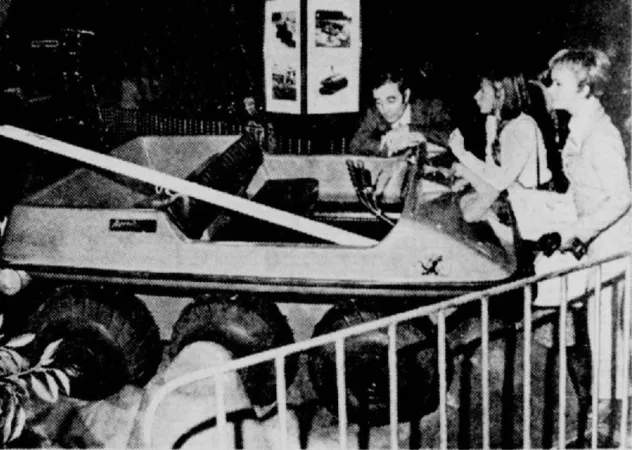


































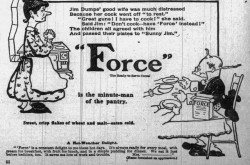
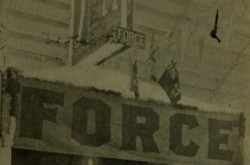
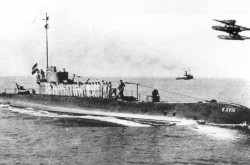
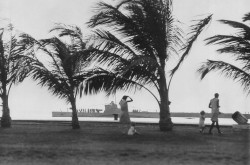
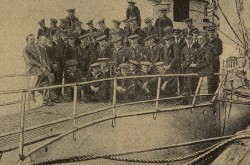
![A block of photographs showing some of the people involved in the bombing of beluga whales in the estuary and gulf of the St. Lawrence River. Anon., “La chasse aux marsouins [sic]. » Le Devoir, 15 August 1929, 6.](/sites/default/files/styles/thumbnail_7/public/2024-09/Le%20Devoir%2015%20aout%201929%20page%206.jpg?h=584f1d27&itok=TppdLItg)
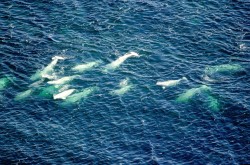
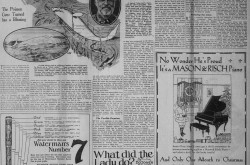

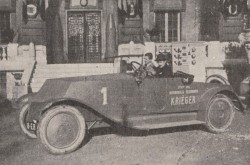
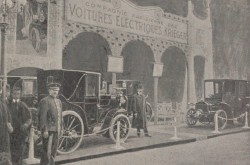
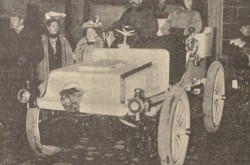
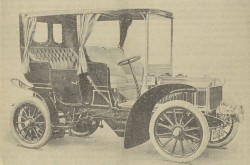

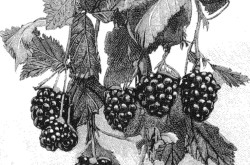
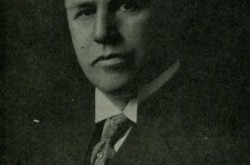
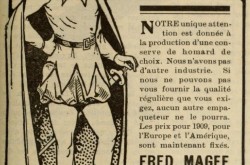
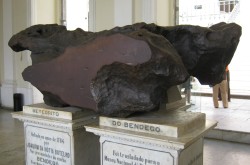
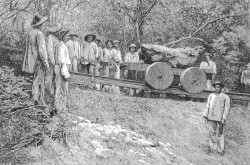
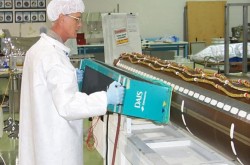

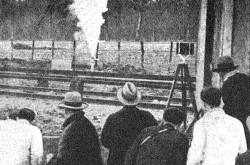
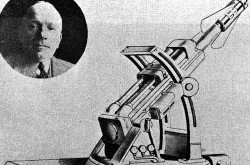
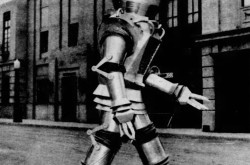

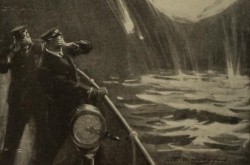
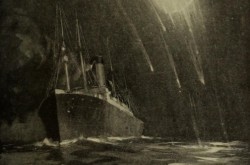
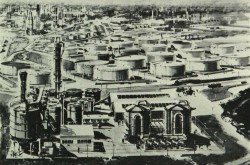

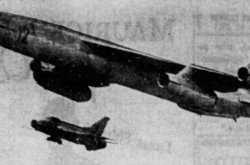
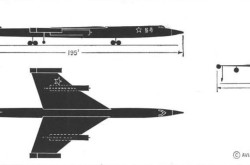
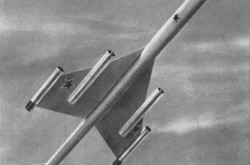
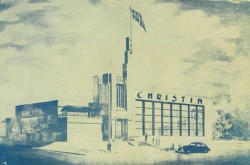
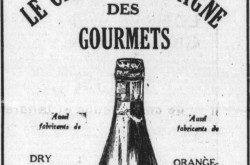
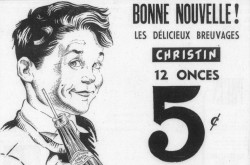
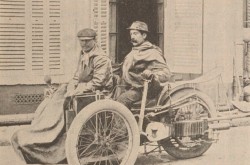
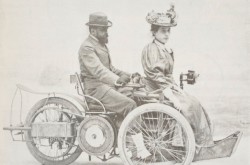
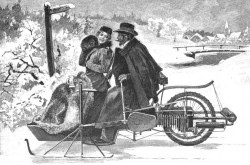
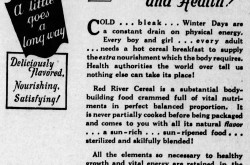

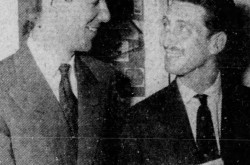
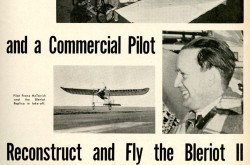
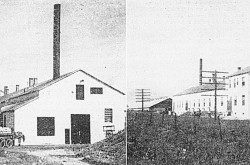
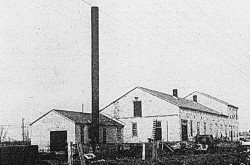



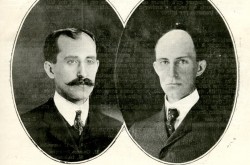

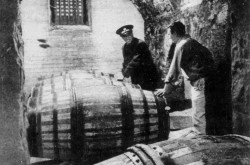
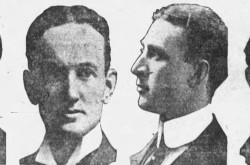
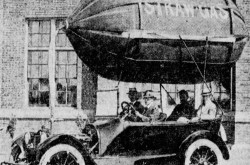
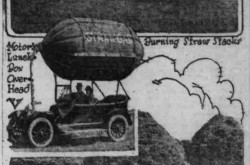
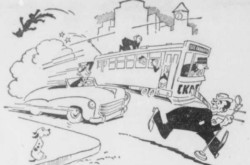

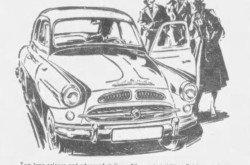
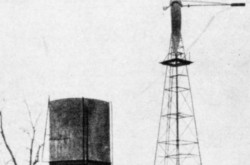
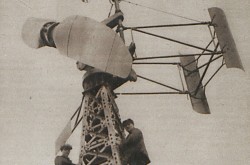
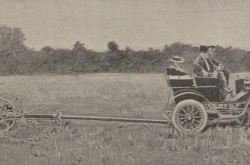

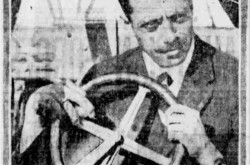
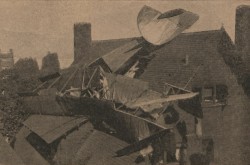
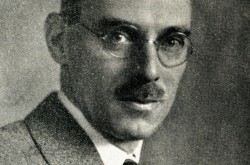
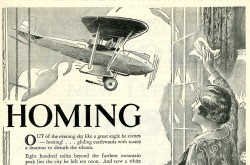
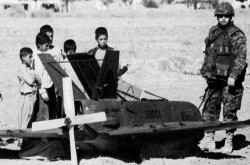
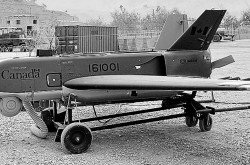
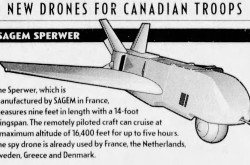
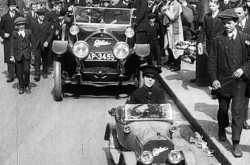
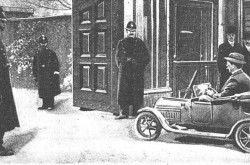
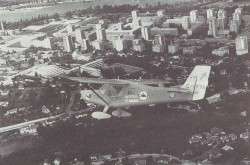
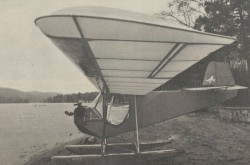

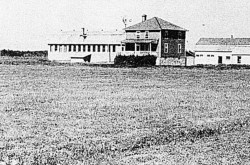
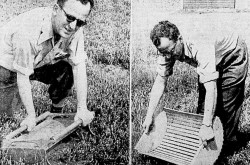
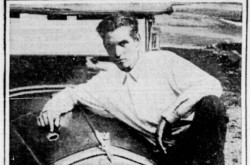
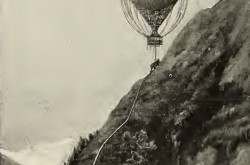
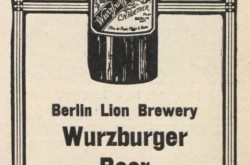

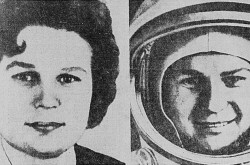
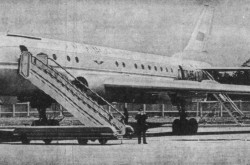
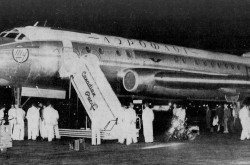
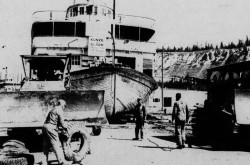
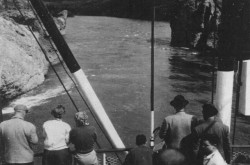
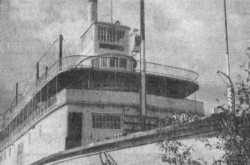
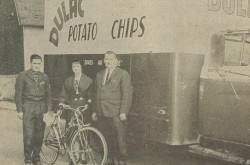
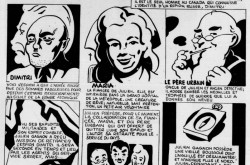
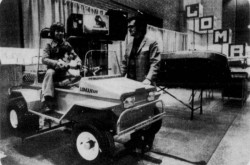
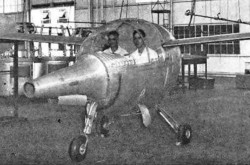
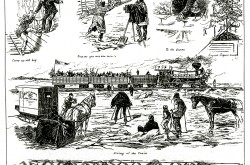
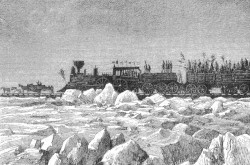
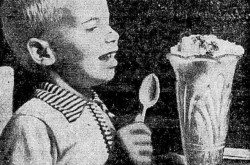
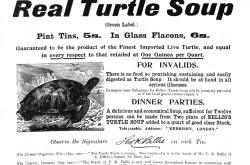
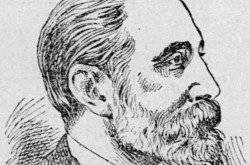
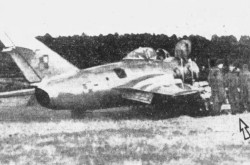
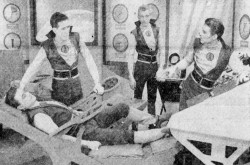
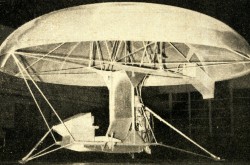
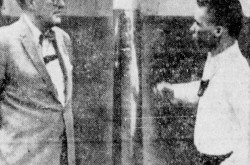
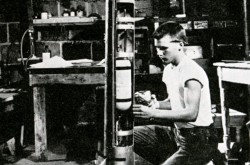
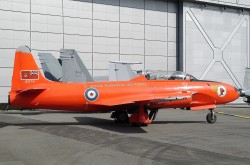
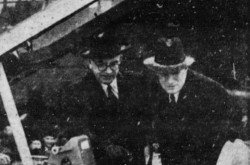
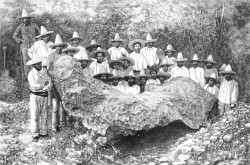
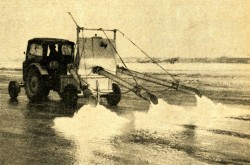
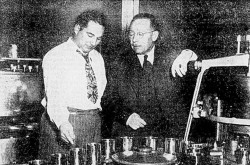
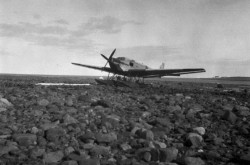
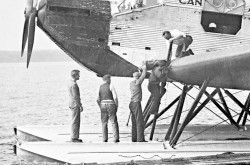
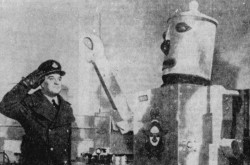
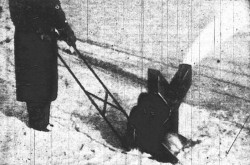
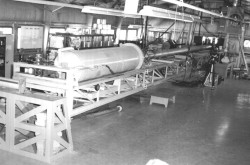
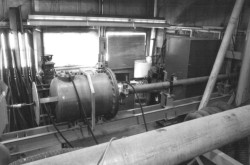
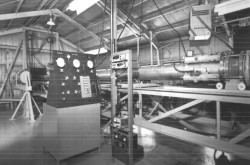
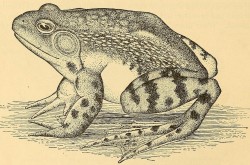
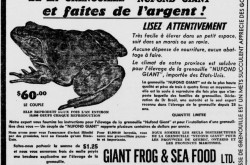
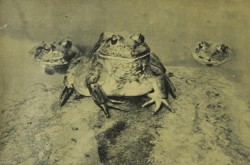
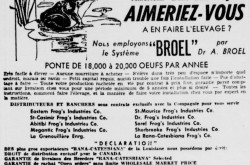
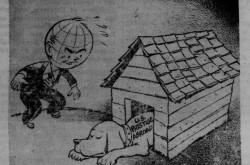
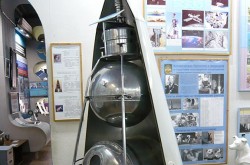
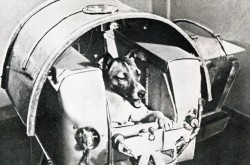
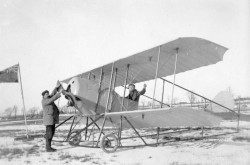
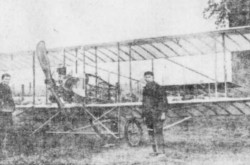
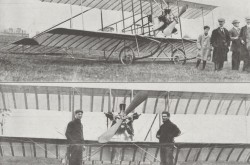
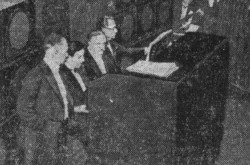
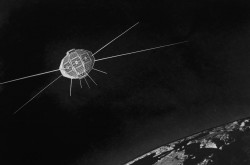
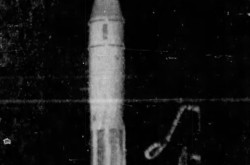
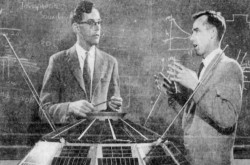
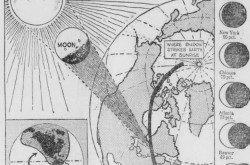



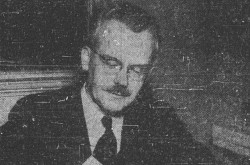
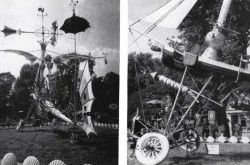
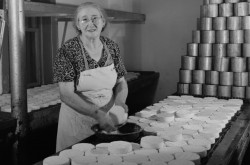
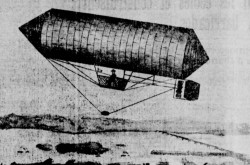
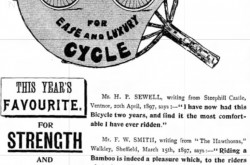
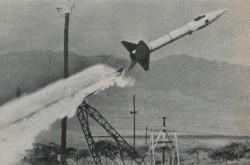
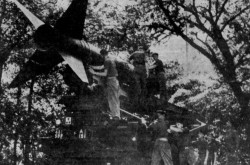
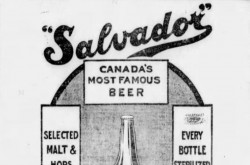

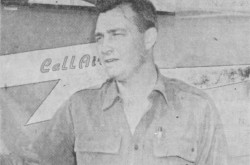
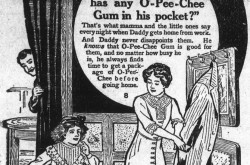
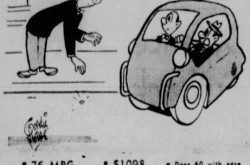
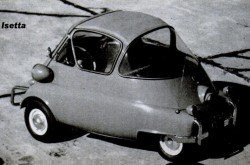
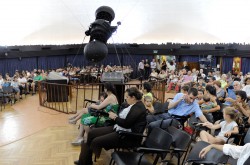
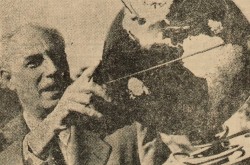
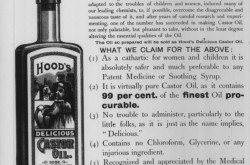
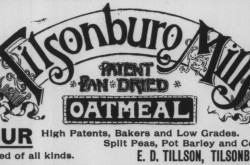
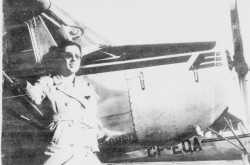
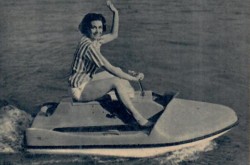

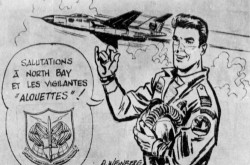
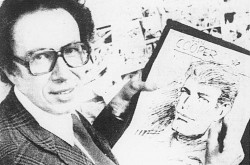
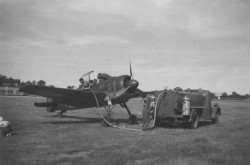

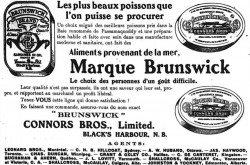


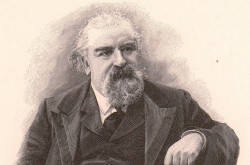
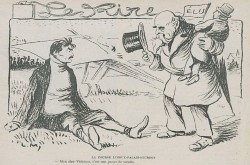
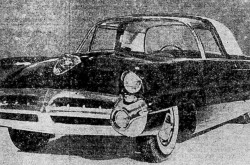
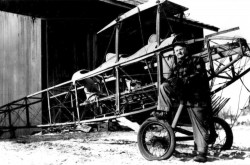
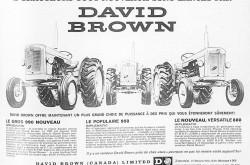
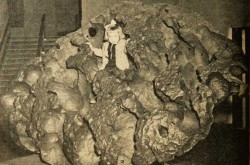
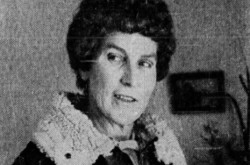
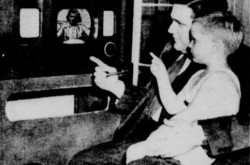
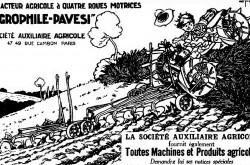
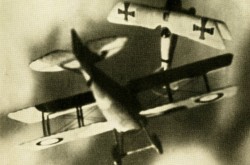
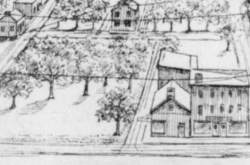
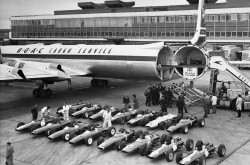
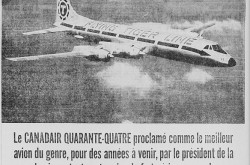
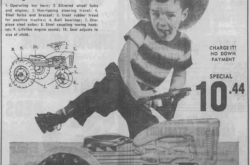
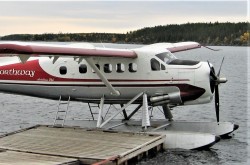
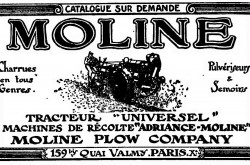
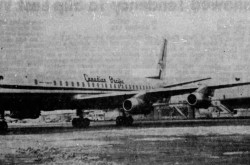
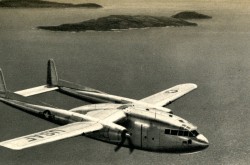
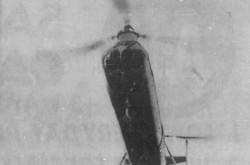

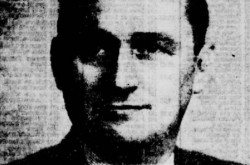
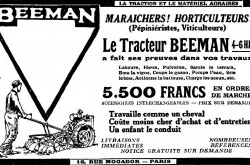
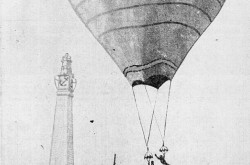

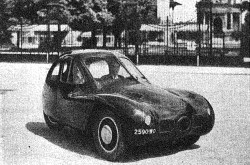
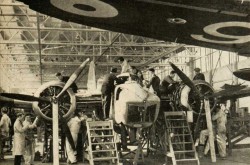
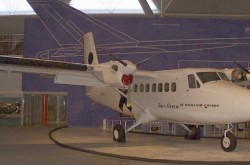
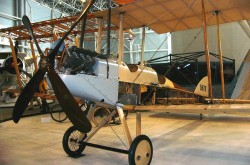
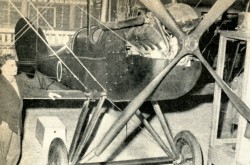

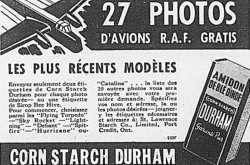

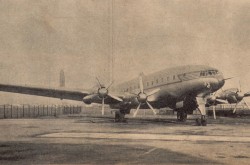
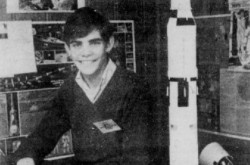
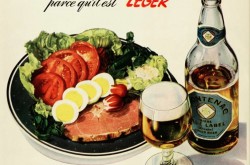
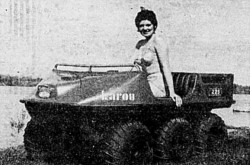
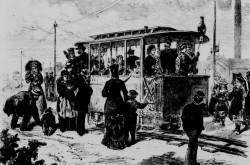
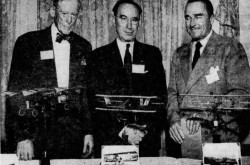
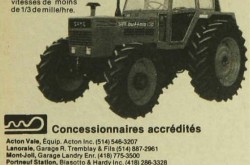
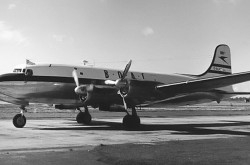
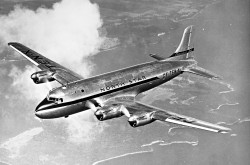
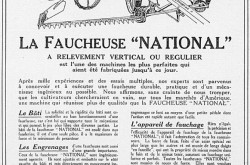
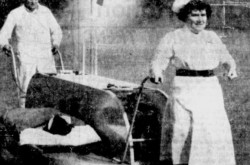
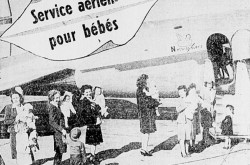
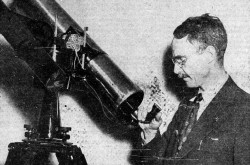
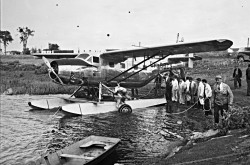
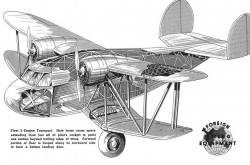
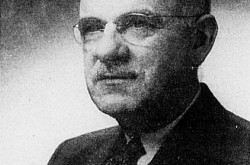
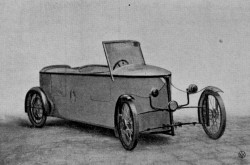
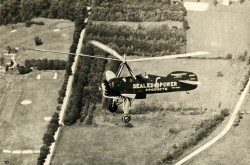
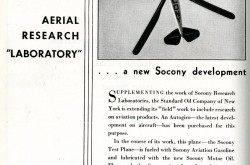
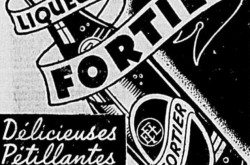
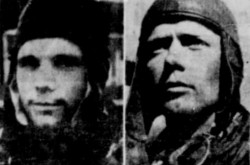
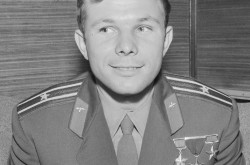
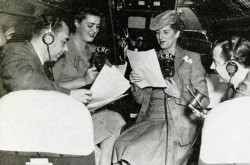
![Peter Müller at the controls [sic] of the Pedroplan, Berlin, Germany, March 1931. Anon., “Cologne contre Marseille – Le mystère du ‘Pédroplan.’ [sic]” Les Ailes, 2 April 1931, 14.](/sites/default/files/styles/thumbnail_7/public/2021-04/Les%20Ailes%202%20avril%201931%20version%20big.jpg?h=eafd0ed4&itok=WnBZ5gMf)
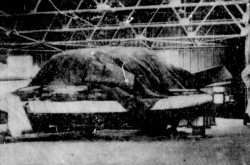
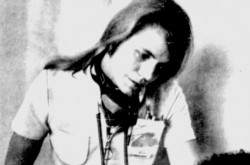
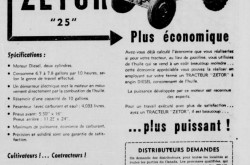
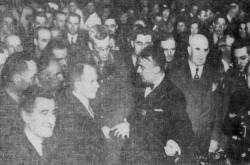
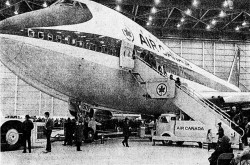
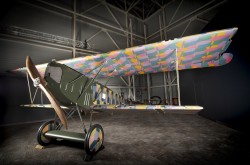
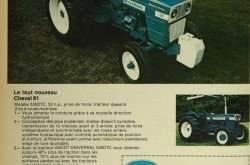
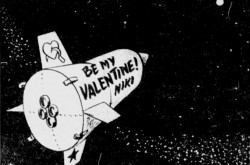
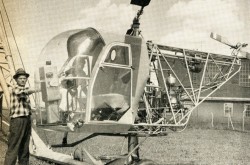

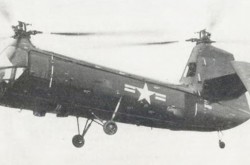
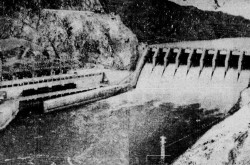
![One of the first de Havilland Canada Chipmunk imported to the United Kingdom. Anon., “De Havilland [Canada] DHC-1 ‘Chipmunk.’” Aviation Magazine, 1 January 1951, cover.](/sites/default/files/styles/thumbnail_7/public/2021-01/Aviation%20magazine%201er%20janvier%201951%20version%202.jpg?h=2f876e0f&itok=DM4JHe5C)
